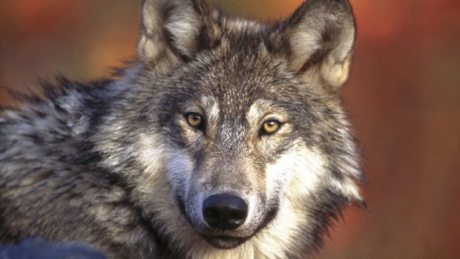- The more beautiful world our hearts know is possible
- How whales change climate
- How wolves changed the rivers
Last Updated on August 16, 2015
This is a stunningly beautiful example of the integral balance of Nature… how She weaves all Her many elements together into an implicate order oftentimes hard for the materialist-reductionistic mind of Man to see… and too easily ignored. I expect, however, there may be more than just wolves at play in this story. Man is so blind, what else have we missed? What more is there negatively and positively impacting the natural ecosystem of Yellowstone National Park?
[youtube id=” ysa5OBhXz-Q” align=”center” mode=”normal” autoplay=”no” maxwidth=”1000″ parameters=”?modestbranding=1 controls=2 showinfo=0″]
In Alberta, Canada, the Government runs programs to cull off the wolves. They do this in the belief it will increase the declining Caribou population. I found out about this through online petitions friends were sending me in recent months. Here’s a copy of what one such petition organiser has to say about this:
In the effort to preserve endangered woodland caribou populations in Alberta’s northern regions, the province’s government has initiated a large-scale wolf cull. In recent years more than 500 wolves have been hunted by air and shot, left to suffer and die in the woods. According to the government, effective population control of the wolf, a known caribou predator, will help eliminate continued decreases in caribou populations.
However, recent peer-reviewed scientific studies have shown that the region’s wolves are hunting far more deer than caribou. This evidence lead scientists to look for other reasons for caribou population decline. By examining caribou scat, scientists found that caribou in the area are dealing with serious levels of stress which they conclude is due to the rapid scale of oil and gas development, most notably of the tar sands, in traditional caribou habitat. Tar sands development, which requires the destruction of ancient boreal forest, means that caribou are being forced into less-densely wooded areas where they are more exposed to hunters, vehicles and predators.
Also, the loss of old growth forest means caribou have little access to the lichens they feed on to survive Alberta’s cold winters. Woodland caribou are highly sensitive to disruptions in their habitat, migration and mating patterns. Increased industrial activity, forestry, hunting and off-roading have all contributed to the decrease in caribou populations, although the Albertan government is holding the wolf responsible.
Biologists have come forward to condemn the wolf cull as “morally and biologically wrong” and more scandalously “a waste of time.” — source: http://chn.ge/17k0wAb
Here’s a few quotes from an article on Care2.com about this (the article’s from 2011, so this wolf culling has been going on for a while): http://www.care2.com/causes/culling-wolves-will-not-save-caribou.html
Caribou herds in Alberta and parts of British Colombia are nearing extinction. Environment Canada has unveiled a new plan to rebuild the dwindling herds in Alberta’s tar sands region. The primary suggestion is to cull their predators, the wolves. …
This comes on the heels of news that British Colombia is allowing ranchers and First Nations communities in the province’s Cariboo region to kill wolves that might attack livestock. Once again, wolves will pay the price for problems caused by humans. …
The tar sands are the most recent, and most visible, cause of the habitat destruction that has led to loss of caribou. The area has been logged, mined, scraped and fracked into an environmental disaster that can no longer support the wildlife populations that once thrived there. The Raincoast Conservation Foundation’s Paul Paquet writes in The Guardian:
“Egged on by a rapacious oil industry, the federal government has chosen to scapegoat wolves for the decline of boreal caribou in a morally and scientifically bankrupt attempt to protect Canada’s industrial sacred cow: the tar sands. Yet, the ultimate reason why the caribou are on the way out is because multiple human disturbances – most pressingly, the tar sands development – have altered their habitat into a landscape that can no longer provide the food, cover and security they need.”
Take Action to save wolves (and rivers?) in Canada
Here are a couple of online petitions (as of Feb 17, 2015) aimed toward the Government of Canada reconsidering the best options for restoring Caribou populations:
Change.org <— if signing only one petition, I recommend this one organised by pacificwild.org
Here’s some interesting campaign info on the Pacificwild.org site.
One more petition here: http://forcechange.com/13664/tell-canada-to-stop-poisoning-wolves/
Take a look at the following photo, and you tell me… What’s likely having a bigger impact on Caribou populations? The wolves or the massive destruction from the Alberta tar sands mining?
[2011] Extraction of Alberta’s energy-intensive tar sands has expanded steadily in recent years, with about 232 square miles now exposed by mining operations at the Athabasca River site. Tar sands production is expected to double over the next decade, which could mean the destruction of 740,000 acres of boreal forest and a 30% increase in carbon emissions from Canada’s oil and gas sector. — Source: http://bit.ly/17k4UiP
Is the Wolf a Real American Hero?
So, having said all that, and posted that video, it’s worth taking a look at another side (i.e. opinion) to this story. The following article makes for interesting reading. The author makes pertinent points and asks valid and important questions…
Your thoughts? Comment below…


Recent Comments